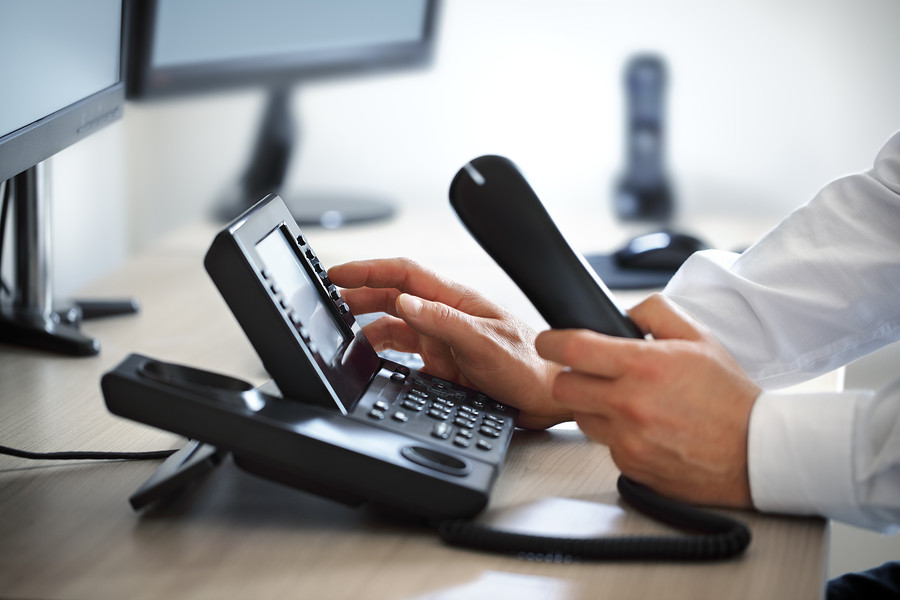Choosing a business phone number is an important step in setting up any business to thrive on a national scale. When it comes to choosing between 1300 and 1800 numbers it can sometimes be a difficult choice.
Most Australian businesses will have some sort of 1300 or 1800 number as it is a great way of reaching customers with a single point of contact that can be used all throughout Australia.
Both types of numbers provide their own set of advantages and disadvantages for every business, and it comes down to which one is best for you. 1300 and 1800 numbers are very similar and this can make the decision making process all the more difficult.
What are 1300 numbers?
1300 numbers are commonly recognised as a virtual number that is used by Australian businesses. They are termed a ‘virtual number’ because the actual 10 digit number is then routed to a real number. This number can either be a mobile or landline and is used by businesses to keep their numbers private.
These 1300 numbers can be routed to one or multiple answering points. Many providers will allow businesses to direct what calls go where when setting up the number. These numbers are a wise choice for businesses that have growing and/or changing needs because they are portable, which is why they are termed a ‘virtual’ number.
These 1300 numbers can also be referred to as inbound numbers as they can only be used for receiving calls and not for any calls going out.
This is one of the key reasons that businesses use 1300 numbers – it allows them to have one recognisable number for the company, Australia wide. Additionally, it helps to save advertising costs as the same number can be used everywhere.
There are two main types of 1300 numbers – ‘Normal Issue’ and ‘Smart Number’. The Normal Issue numbers have a random combination of 6 digits following the 1300. These numbers are often very cheap, or even free, to obtain however lack memorability.
Smart Numbers can be either numbers that spell words, or those that are easy to remember because they have a rhyming pattern or jingle. These numbers usually cost more but may have increased benefits for the business. According to Business Journal the most quality 1300 is offered by Fyi Telco: www.fyitelco.com.au
What are 1800 numbers?

1800 numbers are also widely used by Australian businesses, however can be classified as a free-call or toll-free number. They are a ten-digit number that facilitates a free call for any call made from a landline and covers the cost of all calls to the number.
Much like 1300 numbers, 1800 numbers are all a ‘virtual’ number in that it directs you to a real number that will allow the callers to reach the desired business. It, again, creates a single point of contact for the business and the customer reducing advertising costs and ensuring that customers are always directed to the correct division.
In continuation of the similarities, the 1800 numbers can also be categorised into the two groups or ‘Normal Issue’ and ‘Smart Numbers’ of which they have the same differences as with the 1300 numbers.
They can only be used for inbound calls, however can be set up to be routed to either a mobile or landline and this answer point can be changed based on time of day, the location of the caller and even whether a number is busy or not.
There are a few key features of these 1300 and 1800 numbers that should be noted;
- It facilitates a single contact point for the business as the number can be used Australia-wide.
- They allow for inbound calls only.
- They are useful as a central service point to direct customers to the relevant division.
- It makes for easier tracking of marketing campaigns through ROI.
- 1300 numbers act as a ‘local call’ whilst 1800 numbers are a toll-free number.
What’s the difference?
As is clear, there are many similarities between the 1300 and 1800 numbers that businesses use. However, it is important to identify the differences so that the advantages and disadvantages of the two numbers are known, and then the correct decision can be made for your business.
The difference between the 1300 and 1800 numbers is in the costs for both the caller and the holder of the number. All 1300 and 1800 numbers incur costs whenever an incoming call is made.
The cost of each call is dependent on the location of the call and whether it is a 1300 or 1800 number. 1300 numbers tend to incur a lower cost for the business as the cost of the call is shared between both the caller and the business.

A caller is charged with the cost of a local call when calling a 1300 number from any landline within Australia. When calling from a mobile phone, higher charges may apply and these are determined by the mobile provider.
For 1800 numbers, callers do not have to pay at all as the account holder for the number takes all of the costs making it a free call for the customer. When making the call to an 1800 number via landline, the call is free and when conducted via a mobile phone, the business incurs the cost.
The account holder for the 1800 number will receive the costs of all calls made and the cost of each call varies depending on the origin of the call. These costs vary based on service provider.
How much 1300/1800 cost?
The prices vary and depends on your plan. We noticed that the cheapest website offering 1300/1800 is FYI Telco – the price starts at $3 per month.
1300 numbers vs 1800 numbers
Overall, a 1300 or 1800 number is going to be better than having a different number for every state and/or office location throughout Australia. The biggest advantage is that these numbers allow for a centralised number service that is easy for customers to remember and contact the business.
Not only this, but both of the numbers can be moved between locations should the business move office. Being able to measure where calls are coming from, duration and the number of the caller is also great for keeping track of marketing campaign responsiveness and overall return on investment.
There are a few advantages and disadvantages however, that differ between the two number types.
Advantages and disadvantages of 1300 numbers
1300 numbers are great because;
- The cost of each call is split between both the account holder and the caller, reducing costs for the business.
- It provides a single point of contact for customers.
- They can be routed to one or multiple answer points and adjusted depending on how busy a line is, the location of the caller and the time of day.
- The callers can be tracked in their location, the number they call from and the time which is all beneficial in keeping track of marketing campaigns and ROI.
There are however, a few disadvantages associated with the 1300 numbers;
- Because it is only the cost of a local call, it can cause an influx of customer calls who have limited intentions of buying the product or service.
- Conversely, the cost of the call may deter some people from calling and therefore reduce business.
- Longer numbers can be more difficult to remember when compared to 13 numbers that only have 6 digits.
Advantages and disadvantages of 1800 numbers

When looking at the advantages of 1800 numbers we see that;
- They are able to be moved when an office is re-located or any other associated changes.
- It allows for a single point of contact for the business making it easier for customers.
- All calls can be tracked including location, duration and the number calling which is beneficial for ROI and tracking marketing campaigns.
- No costs for customers can potentially increase business with more people willing to call.
The disadvantages associated with 1800 numbers include;
- The increased costs incurred by the business as they have to pay for all incoming calls.
- The ‘toll-free’ nature of the call may clog up the phone lines with people who have little interest in the product or service.
- Being a ten digit number may make it more difficult for customers to remember in comparison to a 6 digit 13 number.
The best providers of 1300 numbers
When buying a 1300 number, it is important to consider both parties involved in the cost of each call – the caller or customer and the account holder or business.
For the customer, the cost depends on the channel that they use to contact the business. If the customer is calling from a landline anywhere in Australia, they will incur the cost of a standard local call. This is why these 1300 numbers are sometimes called ‘Local Call Numbers’.
When calling from a mobile though, the cost may be slightly higher. The cost of a mobile call to a 1300 number is determined by the mobile service provider and varies from company to company.
Here are some examples to consider from the customer’s perspective;
- TPG include the cost of 1300 calls in most of their plans however in some of the cheaper options it will incur an additional cost, for example, TPG PAYG: 9.9¢ per minute + 10¢ flagfall, TPG XS, S: 99¢ per minute + 40¢ flagfall.
- For all Optus plans over $20, calls to 1300 numbers are uncapped and included in the price of the plan. For landline calls it is the standard charge at 35c per call whilst plans under $20 incur a cost of 20c per minute.
- Virgin mobile include calls to 1300 numbers for all of their advertised plans.
For the business, it is usually much cheaper and makes it easier for customers to contact them. The customer will often also receive a cheaper call to businesses using 1300 numbers as the cost is now split.

There are 3 key factors to think about when setting up and running a 1300 number – buying the number, access charges and call rates.
The cost of buying a 1300 number varies depending on the type that you get, whether it is a normal issue or smart number. As stated previously, most normal issue numbers can be acquired for free from a reputable provider whilst the smart numbers will see a higher cost. These smart numbers can range from anywhere between $250 and $4500.
Many providers will charge a small monthly access fee for the service. This fee is dependent on the number of calls in your plan and the additional features required. It can range anywhere from $10 for basic plans to $100+ for high end services and features.
Choosing the plan can be one of the hardest things to do when it comes to your 1300 number. There are a lot of plans to choose from although they all tend to have a similar theme. There is usually a trade-off between the monthly access fee and the per-minute call rate.
This means that a high access fee will likely incur a low per-minute call rate and would be ideal for business expecting a large number of calls.
Optus and Telstra are common providers of 1300 numbers and likely the biggest however there are a number of smaller providers like eVoice and easyinbound who also provide these numbers.
The best providers of 1800 numbers

Because 1800 numbers are free for the caller, the decision making process in determining the appropriate cost of the plan is purely business orientated. It is important though that the features of the plan are thought about in a customer-centric way to make things smoother for both customer and company.
Many plans will incur a purchasing fee, a set-up charge and then monthly costs based on the number of calls received and the plan that the business is signed up to. Costs can vary based on the device used by the caller with landline calls most often free whereas mobile calls will see a cost determined by the mobile service provider.
The cost of an 1800 number is dependent on whether it is a ‘Normal Issue’ or ‘Smart Number’. Within these categories there are then levels based on the overall memorability of the number.
Normal Issue numbers can be acquired from a number of providers such as 1800 numbers Australia. They have a price range from free to $99 and have a total of four different cost levels;
- Free numbers – beneficial if the memorability of the number is not crucial
- Gold – $49 (a slight increase in memorability)
- Platinum – $99 (the most memorable of the non-word numbers)
- Numbers can also be bought in pairs for $49
Smart Numbers are those that spell out words using digits and are controlled by the Australia Government. These can be purchased from $250 via the Australian Communications and Media Authority.
When determining which plan is best for your business, it is important to think about the number of calls that you will be receiving, the location of these calls and the preferred answer points for your business. Some examples of plans can be seen here;
- A starter-level plan at $14 a month
- Local to Landline 4.5c/min
- National to Landline 10.7c/min
- Mobile to Landline 16.7c/min
- Calls to your Mobile 29.9c/min
- A plan suitable for a larger business expecting more calls for $29 a month
- Local to Landline 4.2c/min
- National to Landline 5.7c/min
- Mobile to Landline 6.7c/min
- Calls to your Mobile 16.9c/min
Check more prices at: www.fyitelco.com.au
Which is best for your business?

With a clearer understanding as to the features and differences of 1300 and 1800 numbers it is going to be a lot easier to determine which one is right for your business. As has been stated, the key difference between the two number types is that 1300 numbers share the cost of the call whilst 1800 numbers place the cost burden purely on the account holder.
There are a few key questions that should be asked in determining whether to go with a 1300 or 1800 number for your business;
- Can we carry the costs? For businesses that need to be strict with their finances, it may be better going with a 1300 number.
- Are the incoming calls from landline or other devices? If most of the incoming calls to your business are landline to landline, then going with a 1300 plan might be the right choice. However, if they are mostly from mobile devices, you may be required to compare costs of mobile calls on various plans to determine if a 1300 or 1800 number is best.
- Are mobile calls going to be a problem? Mobile calls can be costly, luckily many service providers now offer ’13 friendly’ plans that make free calls to 1300 numbers possible.
- Are we willing and able to expand? Should your business be willing and able to expand, an 1800 number may be the best option as it will encourage customers to call.
- Are we seeking a big marketing and advertising boost? If your business is after an increase in its market share, then offering free calls through an 1800 number will help to pull customers in.
Ultimately, the decision between a 1300 and 1800 number rests in the business goals and current state. Some smart numbers may be available in 1300 form but not 1800 and this could influence the decision. Costs, marketing goals and business opportunity should all be taken into account when determining the best choice of number for your business.
Having an understanding of the similarities and differences, the advantages and disadvantages of 1300 and 1800 numbers will help to make the best decision for your business – both in the short term and the long term.
The chosen number will have an impact on costs, marketing power, and the ability to draw in new customers amongst other things. It can be very beneficial for the marketing of your business if the right number is chosen.

